Chew marks
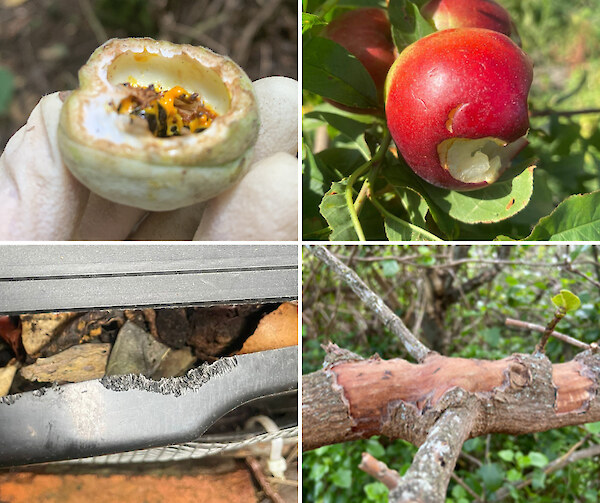 Clockwise from top left: Rat chew on karo seed; possum chew on nectarines; rat chew on tree branch; rat chew on compost binChew marks can show you if there are rats or possums around your place. Some signs you might see are:
Clockwise from top left: Rat chew on karo seed; possum chew on nectarines; rat chew on tree branch; rat chew on compost binChew marks can show you if there are rats or possums around your place. Some signs you might see are:
- chewed fruit, vegetables or trees
- tooth marks on your compost bin or tunnels through the compost
- chewed pieces of outdoor wood
If you see these (or rats, droppings, etc) please report them! You can let us know with our online form or call 0800 NO RATS (667 287). See what each animals’ teeth marks look like below.
Chew cards
Chew cards are a safe and useful tool to understand if predators are around by looking at their unique bite marks. This a great way to decide where to put your backyard trap or tell if rats have snuck back into rat-free areas. Chew cards are pieces of corflute card, with grooves filled with peanut butter (non-toxic lure) – when predators bite down on the card it captures their bite marks.
Installing chew cards
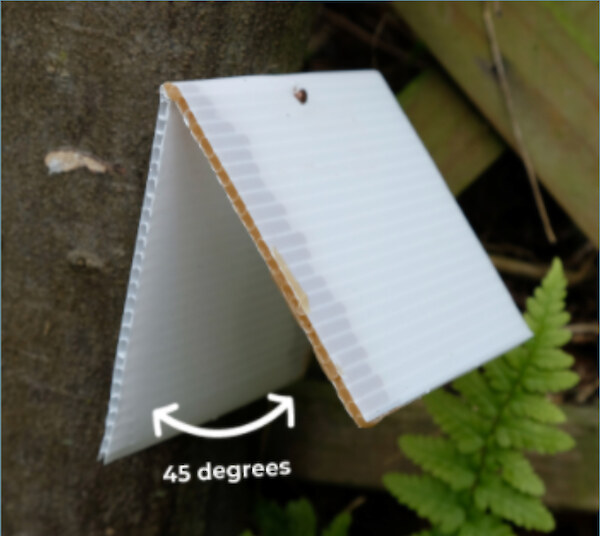
Place the cards in areas where you suspect rat activity, for example, near your compost or rubbish bins. Nail it to a nearby tree or fence (about 5-10cm off the ground) to keep it secure. We suggest leaving it out for five to seven nights.
Identifying bite marks
Rats
Rats typically remove large parts or all of the baited portions of the card.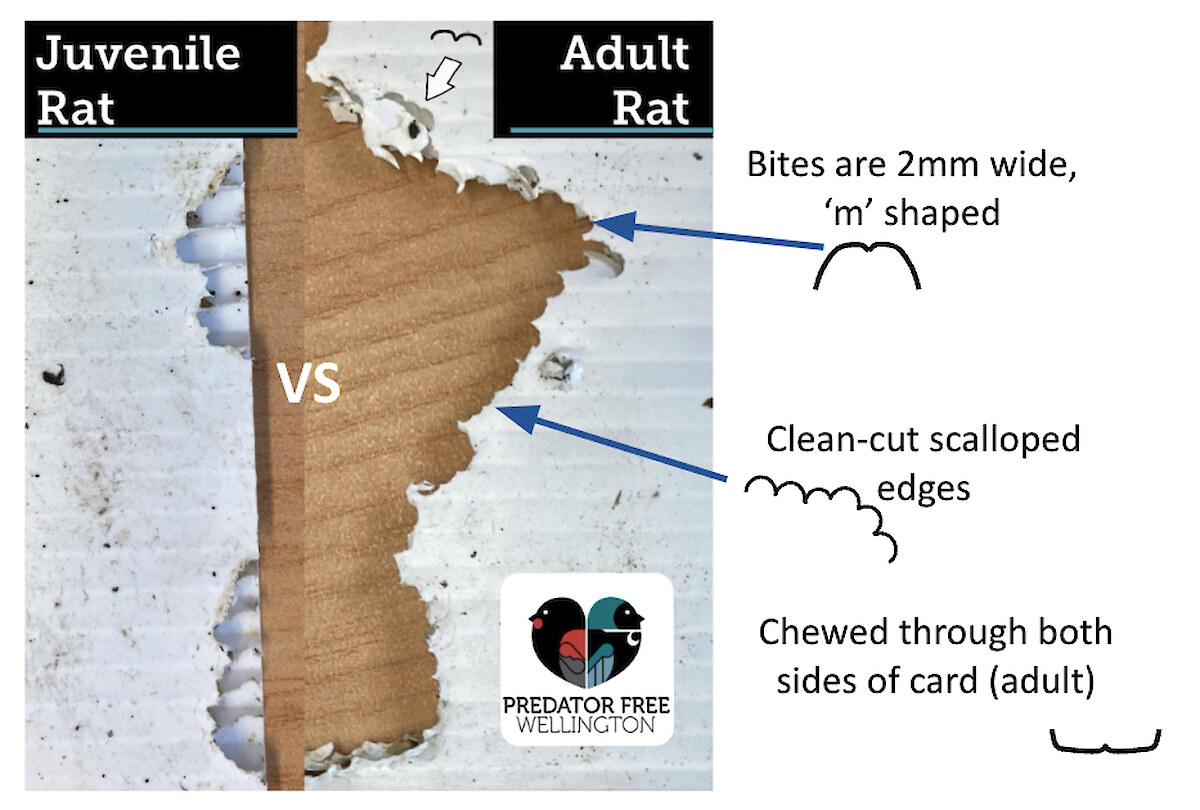
Mice
Mouse chews are usually between the channels on one surface of the card, with fuzzy twisted edges rather than clean teeth cuts.
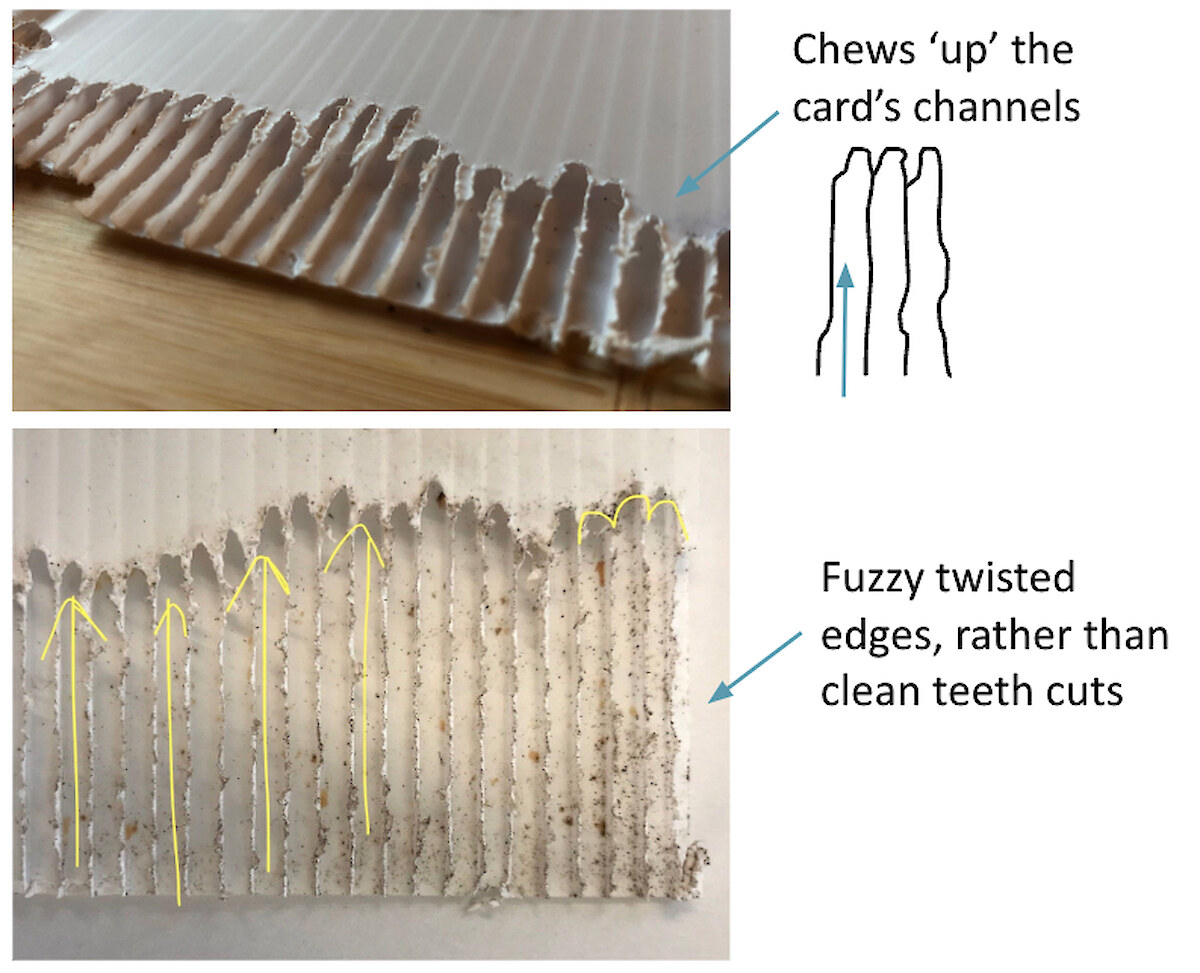
Stoats and weasels
Stoats, weasels and cats leave paired, circular canine puncture marks, top and bottom.
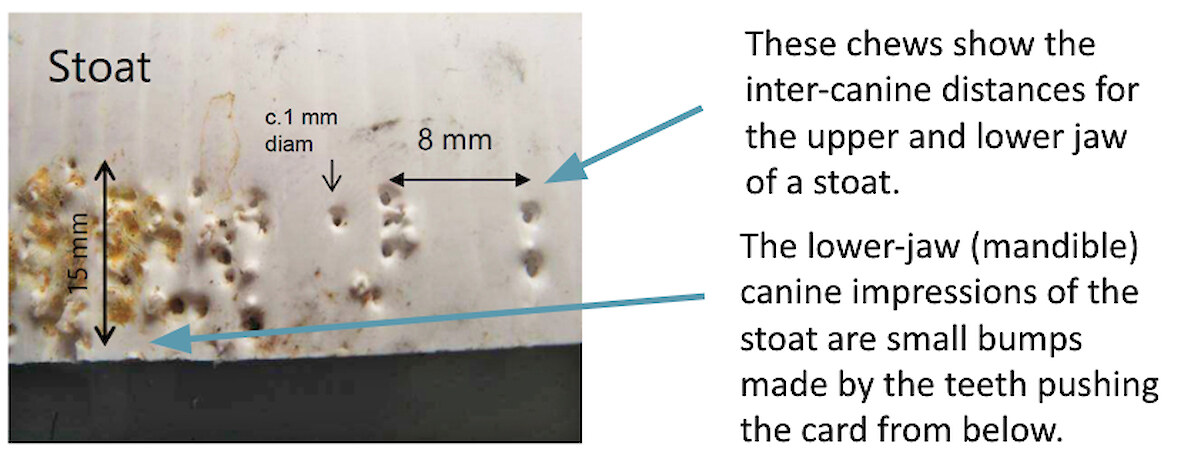
Possums
Possums leave crushed margins that can sometimes look like water damage. They can also leave moustache shaped teeth marks that are 5-7mm wide. Biting and crushing can extend well beyond the baited portions of the card.
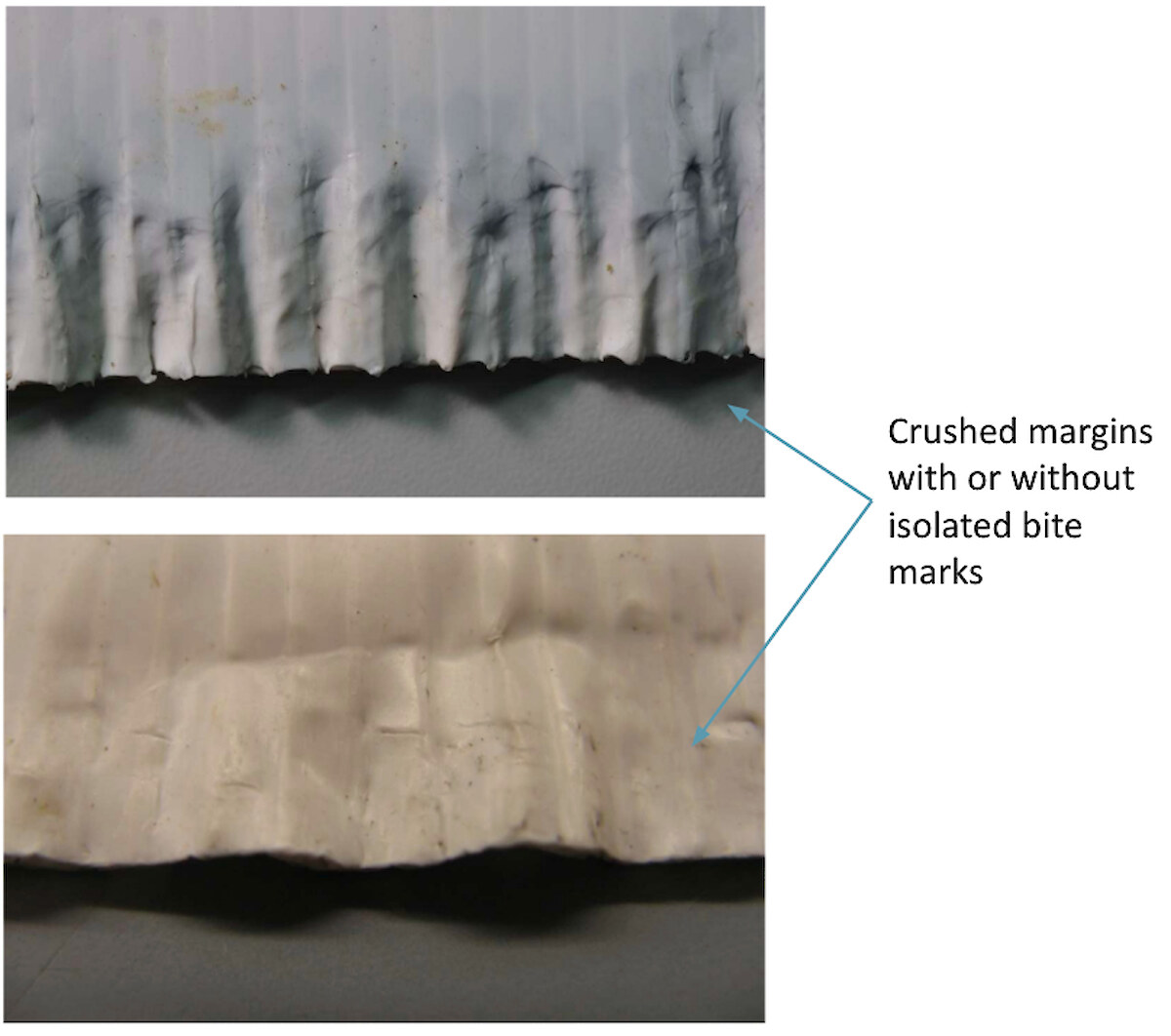
Hedgehogs
Hedgehogs leave both circular puncture marks and blunt mandible (lower jaw) incisor impressions.
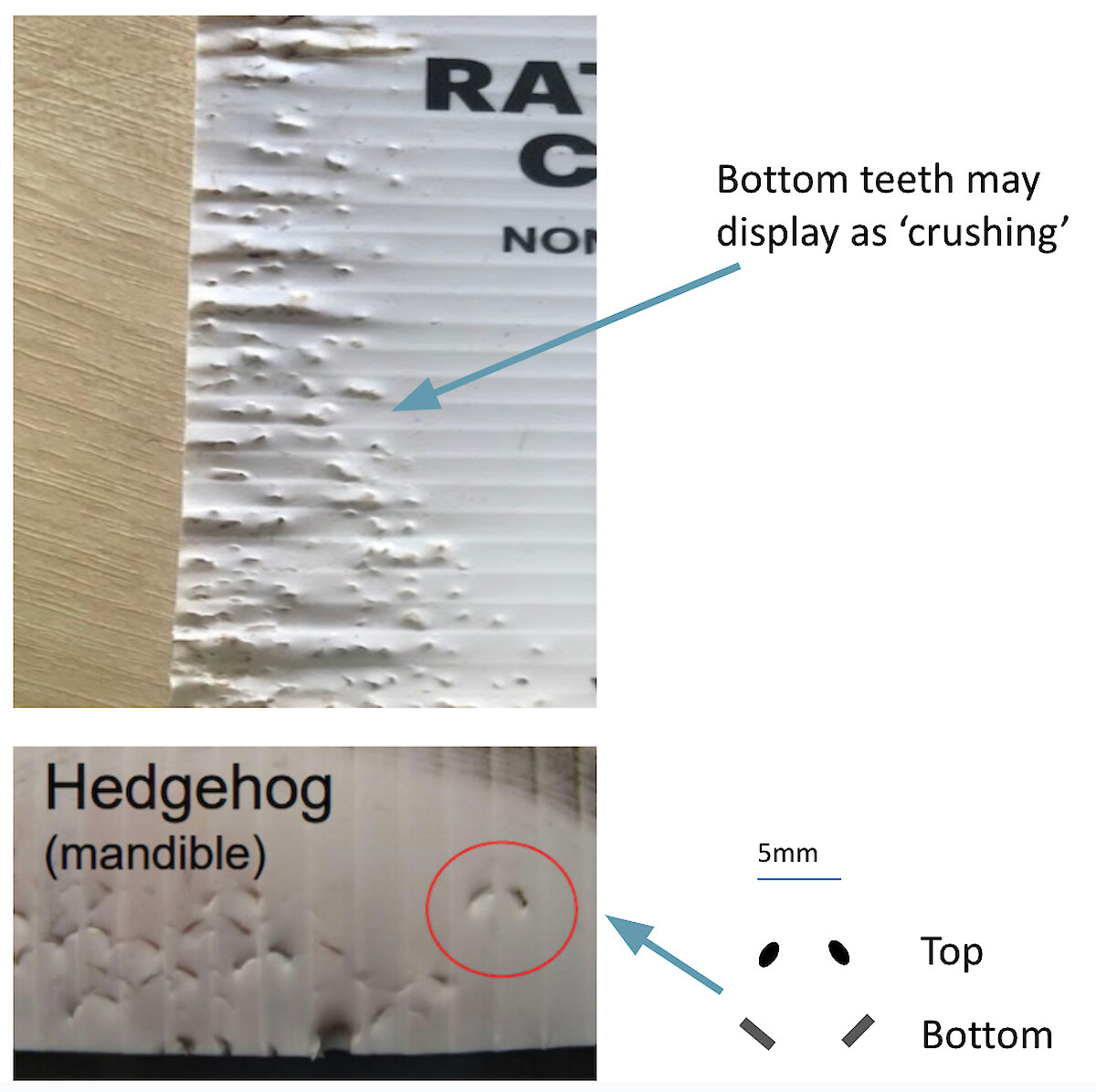
Credit: Manaaki Whenua Landcare Research and Predator Free Dunedin.
